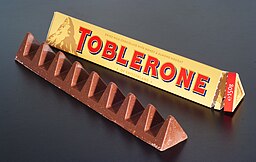You are most likely these days to hear the word "groggy" to describe someone who is tired or has a hangover. Its origin story is not far off from that sense.
The story of groggy begins far from alcohol. It starts with grogram, the name of a coarse, loosely woven fabric made entirely or partly from silk. There was an 18th-century English Admiral, Edward Vernon, who was reputed to have been in the habit of always wearing a grogram cloak. This unique look earned him the nickname "Old Grog" among the sailors under his command.
In the 18th century, sailors in the Royal Navy in the West Indies were customarily given a daily ration of rum. Admiral Vernon was disturbed by the damage to the physical and moral health of his men this rum created. In 1740, he ordered that the rum should be diluted with water. The decision wasn't popular with the sailors, who supposedly dubbed this new mixture "grog" after the Admiral.
The word grog eventually became a general term for almost any liquor that led to people who moved with the unsteadiness characteristic of someone who has had too much grog. You might wake up groggy in the morning without even drinking the night before.
Pirates made a nice modification of the Navy grog which was really just watered down rum. They called the drink bumbo and mixed rum, water, sugar, and nutmeg. The Royal Navy's later grog recipe includes lemon juice, water, rum, and cinnamon. In the Caribbean, I have been served a much fruitier grog that had water, light rum, grapefruit juice, orange juice, pineapple juice, cinnamon, and honey.
Though I could not find an origin for the word "bumbo" I did find variations. Bumbu was commonly used during election campaigns in colonial British America as a way to entice voters to a candidate. The practice was known as "swilling the planters with bumbu." (Why "planters?")
The not-a-pirate and respectable George Washington was particularly noted for using this technique. His papers state that he used 160 gallons of rum to treat 391 voters to bumbu during campaigning for the Virginia House of Burgesses in July 1758. At almost a half-gallon per person, there were surely some groggy voters from that campaign.





